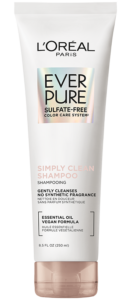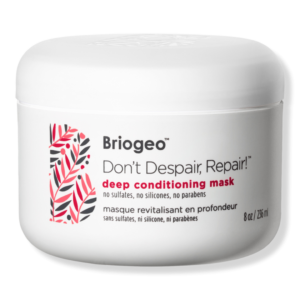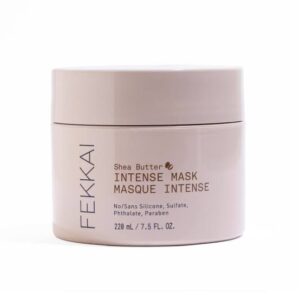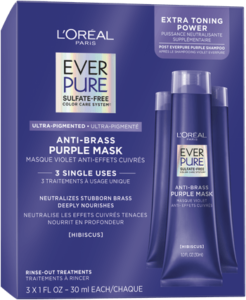HAIRMASK
Hair Masks And How To Use Them
If you're struggling with severely damaged, dry, or dehydrated hair, your regular conditioner might fall short in providing the necessary moisture and nourishment. This signals the need to revamp your hair care routine with a more hydrating approach, incorporating a weekly repairing hair mask treatment.
Just like any hair care product, using a hair mask requires specific steps to reap its full benefits. While you may already include a hair mask in your routine, you might not be entirely familiar with the correct application method. We'll address common hair mask queries, recommend hair-loving products, and offer a step-by-step tutorial on the proper way to apply a hair mask.
What Is a Hair Mask
Similar to how face masks nourish and hydrate your skin, hair masks perform the same function for your strands. Hair masks, also known as deep conditioners, are intensive moisturizing treatments typically incorporated into a hair care routine post-shampooing and before conditioning. You might question the distinction between a hair mask and a conditioner, which primarily lies in consistency and potency.
While conditioners hydrate hair, hair masks contain higher concentrations of potent ingredients and are left on the hair for a longer duration to provide a deeper treatment. Additionally, hair masks tend to have a thicker texture compared to lightweight conditioners, which are easily rinsed out. Available in various formulas catering to different hair needs, hair masks range from deep purple formulas for addressing brassiness to clay formulas for oil control and creamy masks for optimal hydration.
Why Should You Use a Hair Mask?
Hair masks offer numerous advantages for various hair types and are essential components of any hair care regimen. Tailor the frequency of use based on the extent of damage, whether it’s weekly or even daily. Just as you select specific skincare products for your skin type, opt for the appropriate hair mask suited to your hair type. This approach yields hydrated, softer-feeling hair, as the mask works to deeply repair and nourish from the inside out.
Should You Apply A Hair Mask On Wet Or Dry Hair?
Typically, it’s recommended to apply hair masks on damp or wet hair. Wet hair is more porous, allowing it to better absorb the nutrients from the mask, making it the preferred base for application. However, if you’re using an oil-based mask, such as coconut oil, you can apply it to dry hair. Water and oil repel each other, so an oil-based mask may not fully penetrate the hair shaft if applied to wet strands. Ultimately, it’s advisable to adhere to the instructions provided with the chosen mask.
Should You Use a Hair Mask Before Or After Shampooing?
Hair masks are ideally applied to freshly washed hair to allow for better penetration into the strands and scalp. It’s important to review the instructions provided with your specific product to determine its recommended usage and whether it’s suitable for application to the scalp. Many popular hair masks are part of a hair treatment system, typically including a matching shampoo and conditioner, for a comprehensive regimen. Alternatively, if not part of a set, consider using a sulfate-free shampoo suitable for all hair types, such as L’Oréal Paris Sulfate Free Simply Clean Shampoo with Essential Oil, which effectively cleanses without stripping the hair, thus minimizing potential damage.

How to Correctly Apply a Hair Mask
It’s important to adhere to the instructions provided with the particular hair care product you’re using. However, for optimal results, there’s a detailed application method to consider.
Now, delving into the technical steps of applying a hair mask, we’ve outlined a step-by-step guide below to help you provide your strands with the care and attention they deserve.
1. Assess Your Hair’s Needs First
The primary purpose of using a hair mask is to target specific hair concerns you may have, therefore, ensure you select a mask that aligns with those needs.
Hair Mask for Dry, Damaged Hair
For dry, split ends, or brittle hair, opt for a hydrating and repairing mask such as the Briogeo Don’t Despair, Repair! Deep Conditioning Hair Mask. It nourishes and rejuvenates weak, damaged, and tangled hair prone to split ends.

Hair Mask for Color-Treated Hair
To maintain hydration for color-treated hair without compromising its vibrancy, consider using a specialized hair mask that nourishes while safeguarding your color investment. An excellent choice is the FEKKAI Shea Butter Intense Mask, it replenishes lost moisture, enhances shine, and smooths hair texture, all while preserving your color’s vitality.

Hair Mask for Blonde/Silver Hair
If you’re experiencing brassy undertones in your blonde or silver hair, consider employing a potent anti-brass solution such as the L’Oréal Paris EverPure Sulfate-Free Anti Brass Purple Mask Treatment. This targeted treatment effectively combats brassiness in bleached hair, neutralizing unwanted yellow tones while providing nourishment to the strands.

2. Give Your Hair a Deep Clean
Before shampooing your hair, refer to the instructions provided with the hair mask to determine if shampooing beforehand is recommended. If you’re utilizing any of the aforementioned masks, begin by cleansing your hair thoroughly with a shampoo tailored to your hair type and concerns. A common error when using hair masks is applying them to dirty or oily strands. To prevent this, ensure your hair is clean by washing it beforehand.
3. Saturate Your Strands
To ensure optimal results from your hair mask, evenly distribute a generous amount of product from the mid-lengths to the ends of your hair, avoiding the roots unless directed otherwise by your chosen hair mask. For individuals with thick or curly hair, consider dividing your hair into four sections to ensure thorough saturation. Remember, avoid applying the mask to hair that is excessively wet, as this can dilute its effectiveness. Prior to application, gently squeeze out excess water from your hair.
4. Let the Hair Mask Sit for the Allotted Time
While conditioner typically requires only a few minutes of application, certain hair masks may necessitate a longer duration, ranging from five to twenty minutes or even more, depending on the product. Always adhere to the instructions provided with the mask. Most of the masks mentioned earlier require a maximum of five to eight minutes to reap all the benefits.
Rinsing out a hair mask prematurely means your hair may not fully benefit from its nourishing properties. Conversely, leaving a mask on for too long can lead to greasiness or limpness. Certain hair types, such as curly, coily, or chemically-treated hair prone to dryness, may benefit from leaving a mask on overnight. However, it’s essential to consult the directions and ingredients of your specific mask, as moisturizing treatments can be effective overnight, while protein-based masks may weigh hair down if left in for an extended period.
5. Rinse With Warm Water
Unless specified otherwise on the packaging, it’s advisable to rinse the hair mask with lukewarm water after the recommended duration, similar to rinsing out conditioner. Ensure thorough rinsing to prevent product buildup near the scalp and to avoid the appearance of greasiness on the lengths. After showering, wrap your hair in a microfiber towel or apply a heat protectant before blow-drying. The frequency of using a hair mask can vary, ranging from once a week for products left on for 20 minutes or longer, to daily use, depending on the product’s instructions.




